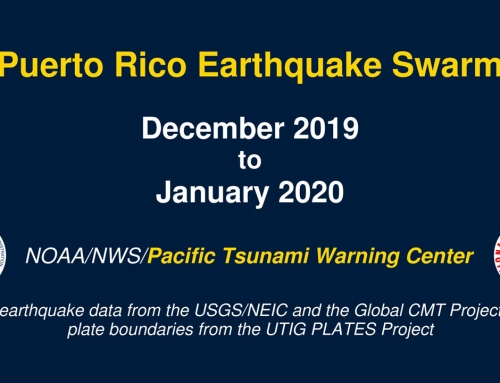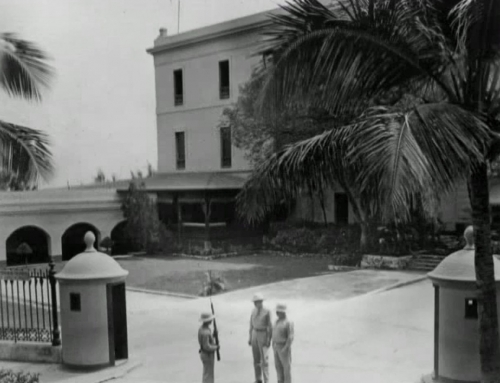Video titulado “Earthquakes of the Caribbean: 1918 – 2019” producido por el Pacific Tsunami Warning Center (PacificTWC) y publicado en su canal de YouTube el 1 de octubre de 2019. El video muestra gráficamente la cantidad y magnitud de los terremotos ocurridos en el mar Caribe entre octubre 1918 y septiembre 2019. No incluye la actividad sísmica reciente en Puerto Rico ocurrida desde el 28 de diciembre de 2019. Como podrán apreciar en el video, Puerto Rico está localizado en un área propensa a terremotos.
Según la descripción del video (en inglés):
The M6.0 earthquake that occurred near Puerto Rico on September 24, 2019, was the largest earthquake to strike the U.S. territory in five years. It was not, however, the largest recorded earthquake there. That distinction goes to the July 7, 1943, M7.7 earthquake that thankfully did not generate a tsunami. Other earthquakes, and sometimes the landslides they cause, have produced tsunamis throughout the Caribbean Sea region, including one in Puerto Rico in 1918. Therefore this animation begins in 1918 and covers the 101 years up until the present day to show all of the recorded seismic activity in this region over that time period.*
The Caribbean Sea lies over the Caribbean Plate, a section of the earth’s crust bounded by active faults separating it from other tectonic plates. These other plates include the North American Plate to the north and east and the Pacific Plate to the west. Relative motions between these plates cause earthquakes at their boundaries. Most of the east-west trending boundaries are “strike-slip” or transform faults such that the plates move past each other horizontally, similar to the famous San Andreas Fault in California. Since they move sideways they do not generally cause earthquakes that move the ocean water above them, though they can trigger landslides that generate tsunamis, such as in Haiti in 2010. But the boundaries of the Caribbean Plate that run northwest-southeast in Central America and the Leeward Islands are subduction zones, a type of plate boundary that can produce megathrust earthquakes with large vertical motions that can cause devastating tsunamis, such as the pair of devastating Dominican Republic earthquakes in 1946.
Some earthquakes in this region that produced significant tsunamis include:
Oct 11, 1919* — M7.1 — Puerto Rico (tsunami killed 140)
Aug 5, 1946 — M7.5– Dominican Republic (tsunami killed 1790)
Aug 8, 1946 — M7.0 — Dominican Republic (tsunami killed 75)
Apr 22, 1991 — M 7.6 — Costa Rica (tsunami killed 3)
Sep 2, 1992 — M7.7 — Nicragua (tsunami killed 170 on the Pacific coast)
Jan 12, 2010 — M7.0 — Haiti (tsunami killed 7)
Aug 27, 2012 — M7.3 — El Salvador (Pacific Coast, no deaths)
* Nota: la fecha correcta es 11 de octubre de 1918, ver la página web de la Red Sísmica de Puerto Rico.
Fuente: PacificTWC vía Water for Puerto Rico / Agua para Puerto Rico










